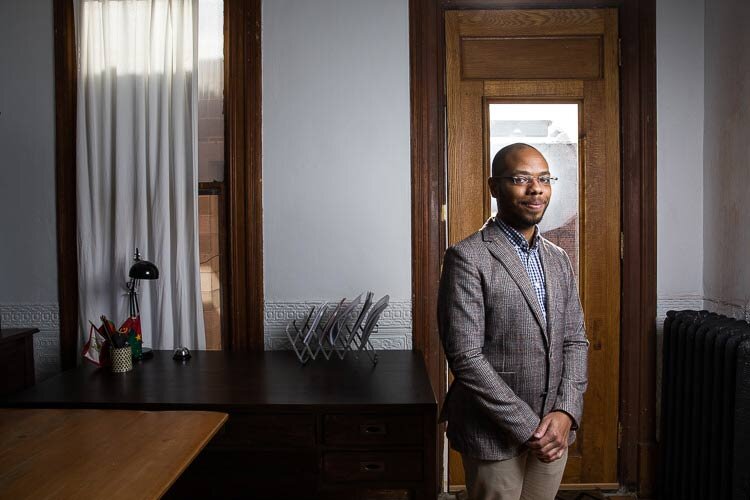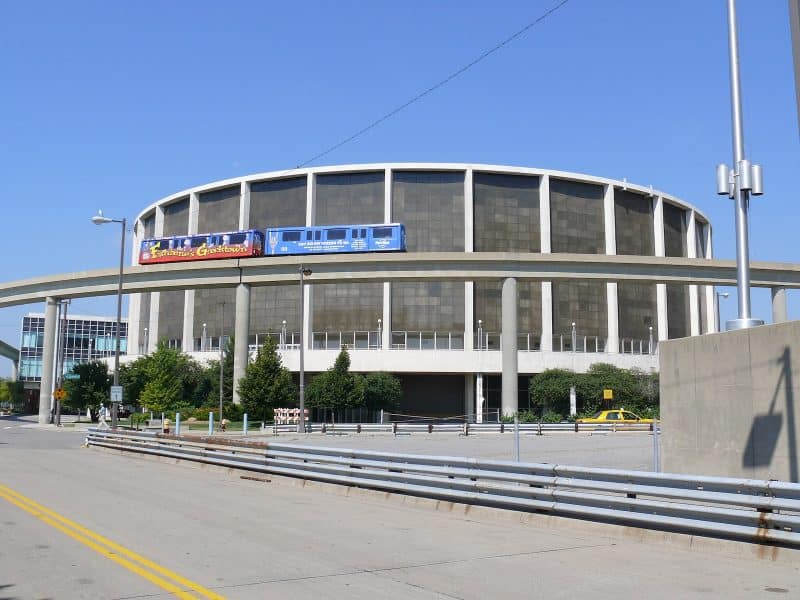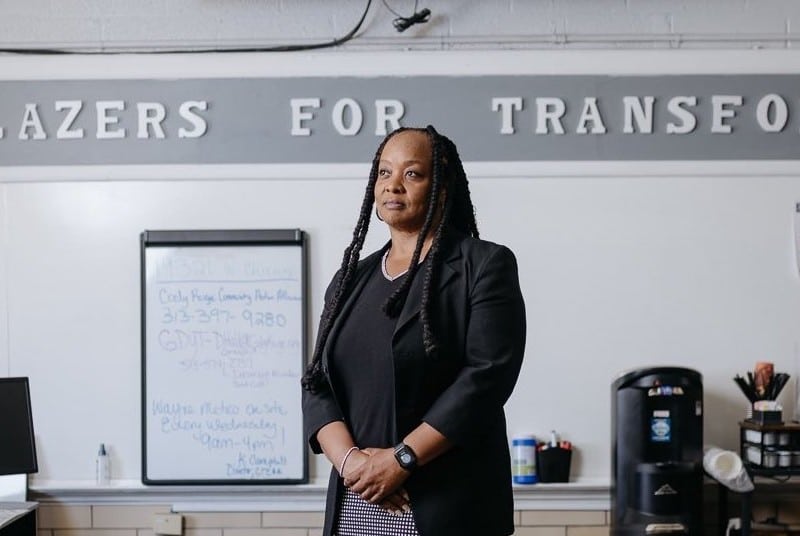How Building Community Value aims ‘to build a better ecosystem’ with Corktown acquisition
Through a partnership with the University of Michigan’s Taubman College of Architecture and Urban Planning, an equitable development scorecard is under development and will be used to determine what gets built at 14th and Dalzelle.

When it comes to adventures in placemaking, the corner of 14th and Dalzelle streets has been a site of innovation for well over a decade.
Jerry Paffendorf, co-founder and CEO of Loveland Technologies, and Mary Lorene Carter began acquiring two vacant homes and adjacent parcels there in 2010, founding the community arts nonprofit Imagination Station that summer.
The historic homes, located directly across from Corktown’s Roosevelt Park and Michigan Central Station, were in disrepair. The Imagination Station duo tasked themselves with the long and arduous task of making them community assets once again. The houses became giant art projects, with rotating installations bringing color and, yes, imagination to the site.
A 2012 fire severely wrecked the already damaged homes and 2236 14th St., affectionately referred to as Lefty, would be forced to come down. But the Imagination Station held true to its mission and continued to work on 2230 14th St., or Righty, and continued to activate the once vacant spaces. Art installations and community events continued throughout the decade. There was even a miniature golf course, or Urban Put Put, that was built on the empty parcels next door.
After eventually undergoing renovation, Righty is now someone’s home.
“Going back more than a decade, we’ve felt very deeply that these were very special properties in a very special place, and that we were lucky to be their stewards to help them through a hard time. That was viewed as sort of crazy for a while because, remember, it was basically vacant houses and a vacant field next to an abandoned hotel across from a giant, abandoned train station that didn’t have much hope of being renewed,” says Paffendorf.
“For years we explored different options for their future while activating them with different art activities and community events, trying to create good energy and an outcome that would prevent them from becoming another parking lot, or something the community wouldn’t value.”
That brief history is all to say that the tradition of forward-thinking projects at 14th and Dalzelle carries on. In December 2020, the nonprofit development group Building Community Value purchased three parcels from Imagination Station to build, well, something.
They don’t know yet.
And that’s the point.
“The goal is to have substantive decisions made by 2023. But there’s no rush in getting something built,” says Chase L. Cantrell, executive director of Building Community Value.
“It really could end up being anything — even a butterfly garden. We don’t know yet.”
For Building Community Value, or BCV, the process of determining what gets built is just as important as the project itself.
BCV has partnered with Eric Dueweke, a lecturer in urban and regional planning at the University of Michigan’s Taubman College of Architecture and Urban Planning, on the project. Dueweke’s Integrative Field Experience class is developing an equitable development scorecard as their capstone project. That scorecard will then be used to determine what gets built at 14th and Dalzelle.
The idea began to form at the Detroit Equitable Development Workgroup, which was first organized in October 2019. While equitable development has been an increasingly popular concept these past few years, it’s difficult to set in definitive terms, says Cantrell. The scorecard will change that.
“It will give us the ability to put a number on things like design, community relationship building,” Cantrell says.
The idea for an equitable development scorecard comes from Minneapolis, where The Alliance community development group first created their own. The Equitable Development Principles & Scorecard is designed for communities and developers to score projects and determine whether or not they’re meeting standards of equity.
The scorecard is made up of sections that include community engagement practices, land use practices, transportation practices, and more. Users score each criterion on a scale of one to five. Under economic development practices, for example, a project would be scored on whether the design “reflects distinct identities of local cultural heritage through the presence, preservation, or addition of architectural assets within a Universal Design.”
Dueweke’s class will finish Detroit’s version of the scorecard later this year.
“The goal goes beyond this parcel in Corktown. Building Community Value is testing a concept. We’re talking to other groups, other developers about using the scorecard. This project lets us show other developers how the scorecard works,” Cantrell says.
“We’re here to become champions of the idea. I hope it gets widely adopted.”
BCV will be conducting community outreach to help determine what gets built on the site. The scorecard will keep them accountable. The site’s future really is up to the community, Cantrell says, and could become anything.
And that’s exactly why Paffendorf was happy to sell the Imagination Station parcels to Chase Cantrell and Building Community Value.
“Over time the right people with the right passion and dedication appeared through the relationships we built. First the McGee family who renovated and moved into the house we’ve called Righty, and now Chase and his team to develop the land next door,” Paffendorf says.
“We’ve always known Chase to be someone with incredible integrity and thoughtfulness who can both listen deeply and act with visionary decisiveness, and we love BCV’s inclusive mission to put Detroiters front and center in the city’s real estate and development activity. It’s those things that brought us together with Chase and BCV.”
The equitable development scorecard fits into Cantrell and Building Community Value’s larger goal to make development more inclusive. BCV offers a six-week Better Buildings, Better Blocks program that teaches real estate development to residents of Detroit, Hamtramck, and Highland Park.
The goal is to give residents the opportunity to shape their own neighborhoods. Building Community Value’s programming does that. And what gets built in Corktown will be the physical manifestation of that philosophy.
“We know that people in the community have ideas about what their neighborhoods should look like. And we’re beginning to build a better ecosystem,” Cantrell says.
“We’re fighting displacement, whether it’s physical or psychological.
“It’s clear that in Detroit, our land use practices disenfranchise Black people. We want to scale back that momentum of displacement.”





